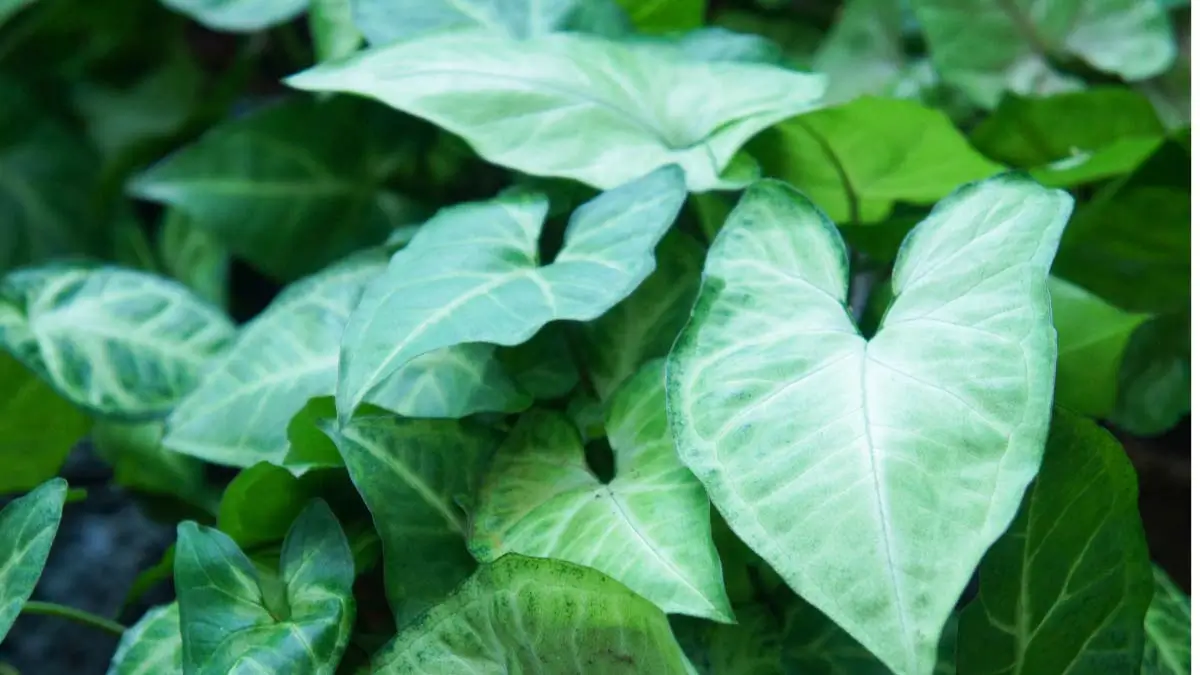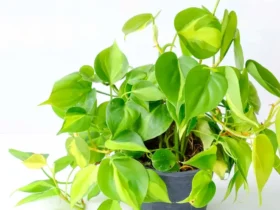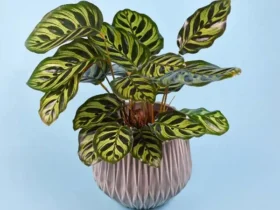Types of Arrowhead Plants are categorized into three types: Arrowhead vine, Arrowhead Syngonium, and Arrowhead philodendron. These plants are known for their arrow-shaped leaves and are popular as indoor houseplants.
Popular Varieties
Arrowhead plants come in various types, including the robusta, pink splash, and tricolor varieties. These plants boast distinctive foliage and are popular among indoor plant enthusiasts for their unique shapes and vibrant colors. Whether you prefer bold or subtle hues, arrowhead plants offer a variety of options to enhance your home decor.
Syngonium plants come in various attractive varieties, each with its unique charm and characteristics.
Syngonium Podophyllum
Syngonium Podophyllum, also known as Arrowhead Vine, is a popular choice for indoor settings.
Syngonium Erythrophyllum
Syngonium Erythrophyllum, with its distinctive red-veined leaves, adds a pop of color to any space. These varieties vary in leaf shape, color, and pattern, making them versatile additions to any plant collection.

Variegated Beauties
Variegated arrowhead plants are an absolute delight for any plant enthusiast. These beauties have eye-catching foliage patterns, with splashes of different colors adding a unique charm to any space. Let’s explore two stunning variegated varieties of Syngonium plants: Syngonium Three Kings and Syngonium Neon Robusta.
Syngonium Three Kings
The Syngonium Three Kings is an exquisite variegated arrowhead plant that typically features three different shades of green. The leaves of this variety are attractively adorned with distinct patterns, including light green centers, creamy-white midribs, and dark green edges. The contrasting colors create a captivating visual effect, making it a standout addition to any indoor garden or office space.
This attractive foliage is not the only reason why Syngonium Three Kings is highly sought after. This plant is also quite versatile and adaptable, making it an excellent choice for both novice and experienced plant parents. Its ability to thrive in low or moderate light conditions and its resilience against neglect make it an easy-to-maintain beauty.
Syngonium Neon Robusta
Syngonium Neon Robusta, as the name suggests, brings vibrant neon hues to your plant collection. This variety showcases leaves with a unique blend of bright greens, featuring stunning neon green veins that pop against the darker foliage. The contrasting colors create a lively and dynamic appearance, instantly enhancing the visual appeal of any space.
Aside from its captivating aesthetics, Syngonium Neon Robusta is also known for being an air-purifying plant. Its ability to effectively filter and cleanse the surrounding air makes it an ideal choice for improving indoor air quality. Additionally, this variety thrives in bright indirect light and prefers slightly higher humidity levels, making it a perfect addition to bathrooms or well-lit areas of your home.
Both Syngonium Three Kings and Syngonium Neon Robusta are excellent choices to introduce a touch of color and visual interest to any indoor space. These variegated arrowhead plants not only provide endless beauty but also require minimal care and maintenance. Whether you’re a seasoned plant enthusiast or just starting your green journey, these stunning variegated arrowhead plants are sure to delight, bringing life and vibrancy to your surroundings.
Rare Finds
Discover the fascinating world of arrowhead plants with Rare Finds, featuring an array of unique and diverse types. Explore the beauty and diversity of these remarkable plants, perfect for adding a touch of greenery to any space.
Rare finds in the world of Arrowhead Plants are a true treasure for plant enthusiasts looking to expand their collection of unique and exotic flora. Two notable rare types of Arrowhead Plants are Syngonium Wendlandii and Syngonium Frosted Heart.
Syngonium Wendlandii
Syngonium Wendlandii is a rare and highly sought-after variety of Arrowhead Plant. This rare find is identified by its stunning velvety green leaves splashed with intricate silver veins, reminiscent of a beautiful natural tapestry. The distinctive appearance of Syngonium Wendlandii sets it apart from more common varieties, making it a prized addition to any plant collection.
Syngonium Frosted Heart
Another delightful rare find is the Syngonium Frosted Heart, a charming Arrowhead Plant with heart-shaped leaves showcasing a captivating gradient of soft green hues. The delicate frosted appearance of its foliage gives this variety a truly enchanting and unique aesthetic, making it a beautiful and coveted gem for plant enthusiasts. These rare finds serve as captivating additions to any plant collection, offering a touch of diversity and allure to indoor green spaces.

Foliage Diversity
Arrowhead plants are renowned for their striking foliage diversity. Let’s explore two fascinating varieties below:
Syngonium Albo-virens
The Syngonium Albo-Virens is characterized by its lush green leaves with subtle white veining.
- Leaves are heart-shaped, adding charm to any space.
- Thrives in bright indirect light, ideal for indoor settings.
- Perfect for beginner plant enthusiasts due to easy care requirements.
Syngonium Rayii
The Syngonium Rayii features velvety green leaves and distinct silver veins.
- Known for its unique texture that sets it apart from other arrowhead plants.
- Requires moderate to bright indirect light to flourish.
- Low-maintenance plant suitable for various environments.
Care And Maintenance
Proper care and maintenance are crucial to keeping your Arrowhead Plants thriving and looking their best. These beautiful plants are relatively easy to care for, but it’s important to understand their specific needs when it comes to light, temperature, watering, and humidity.
Light And Temperature Requirements
Arrowhead Plants prefer bright, indirect light, making them perfect for locations near a window with filtered sunlight. Avoid exposing them to direct sunlight as it can scorch their leaves.
When it comes to temperature, these plants thrive in average room temperatures ranging from 60 to 75 degrees Fahrenheit (15 to 24 degrees Celsius). They are sensitive to extreme temperature fluctuations, so it’s essential to keep them away from cold drafts.
Watering And Humidity Needs
Proper watering is vital for the health of your Arrowhead Plants. Aim to keep the soil consistently moist but not soggy. It’s important to let the top inch (2.5 cm) of soil dry out before watering again to prevent overwatering, which can lead to root rot.
Regarding humidity, Arrowhead Plants appreciate higher humidity levels. You can increase humidity by placing the plant near a humidifier or on a tray filled with water and pebbles. Mist the leaves regularly to mimic their natural tropical habitat.
Propagation Techniques
When it comes to propagating Arrowhead plants, there are several techniques that can be used to create new plants from existing ones. Understanding these propagation techniques can help plant enthusiasts expand their collection and share these beautiful plants with others.
Stem Cuttings
Stem cuttings are a common method for propagating Arrowhead plants. Here’s how to do it:
- Take a healthy stem cutting from the mother plant, ensuring it has at least a few leaves and a node.
- Place the cutting in a container of water or in a moist, well-draining potting mix.
- Keep the cutting in a warm, bright area with indirect sunlight and ensure the soil or water stays consistently moist.
- After a few weeks, the cutting will develop roots and can be potted in its own container.
Aerial Roots Propagation
Aerial roots propagation is another effective way to propagate Arrowhead plants. Here’s how to do it:
- Identify a healthy, mature stem with aerial roots that can be seen growing along the stem.
- Gently remove the stem with the attached aerial roots from the main plant.
- Place the stem in a container of water or in a moist potting mix, ensuring the aerial roots are in contact with the growing medium.
- Keep the stem in a warm, bright area with indirect sunlight and maintain consistent moisture in the soil or water.
- After some time, the stem will develop new growth, and the roots will establish themselves, signaling that it’s ready to be potted in its own container.

Common Problems
Arrowhead plants are generally easy to care for, but they may face some common problems that can affect their health and appearance. By being aware of these issues and taking prompt action, you can ensure your arrowhead plant stays happy and vibrant. The most common problems that arrowhead plants encounter include yellowing leaves and pests and diseases.
Yellowing Leaves
Yellowing leaves are a common problem that arrowhead plants may experience. There can be various reasons for this issue, and it is essential to understand the causes to address it effectively:
- Overwatering: Excessive watering can cause the plant’s roots to become waterlogged, leading to yellowing leaves. Make sure to allow the top two inches of soil to dry out before watering again.
- Underwatering: On the other hand, underwatering can also result in yellow leaves. Ensure your arrowhead plant receives adequate moisture without becoming waterlogged.
- Low humidity: Arrowhead plants prefer higher humidity levels. Low humidity can cause their leaves to turn yellow. To increase humidity, you can mist the plant regularly or place it on a tray filled with water and pebbles.
- Insufficient light: If your arrowhead plant is not receiving enough light, its leaves may start to yellow. Ensure that it is placed in a location with bright, indirect light.
Pests And Diseases
Like any other houseplant, arrowhead plants are susceptible to pests and diseases. Here are some of the common pests and diseases you may encounter:
| Pests | Diseases |
| AphidsSpider mitesMealybugs | Root rotPowdery mildewLeaf spot |
To prevent and treat these pests and diseases, it is important to regularly inspect your arrowhead plant. If you notice any signs of infestation or disease, you can take the following steps:
- Natural remedies: For mild infestations, you can try using natural remedies like neem oil or insecticidal soap to control pests. These solutions are non-toxic and safe for your arrowhead plant.
- Isolation: If the infestation or disease is severe, it is advisable to isolate the affected plant to prevent it from spreading to other plants.
- Pruning: Trim off any infected or damaged leaves to promote healthy growth and prevent the spread of diseases.
- Proper drainage: Ensure that your arrowhead plant is potted in well-draining soil to prevent root rot.
By taking proactive measures and addressing these common problems, you can keep your arrowhead plant thriving and beautiful.

Decor Ideas
Decor Ideas
Transform your space with creative decor ideas using Arrowhead Plants. Enhance your home with these Indoor Display Inspirations and Terrarium and Planter Pairings.
Indoor Display Inspirations
Place Arrowhead Plants on shelves for a lush vertical display. Utilize hanging planters to add a touch of elegance. Create a mini indoor garden by grouping different varieties together. Add a pop of color by placing them in vibrant pots. Display them in decorative plant stands to elevate the look.
Terrarium And Planter Pairings
Pair Arrowhead Plants with ferns for a natural terrarium look. Combine them with succulents for a contrasting texture. Create a miniature forest by placing them in glass containers. Mix and match different colored pots to create a unique display. Plant them in hanging planters to save space and add a modern touch.
Frequently Asked Questions On Types Of Arrowhead Plants
What Are The Different Types Of Arrowhead Plants?
There are mainly three types of Arrowhead Plants – Syngonium podophyllum, Syngonium rayii, and Syngonium wendlandii. Each has unique leaf shapes and colors.
How Do I Care For My Arrowhead Plant?
Arrowhead Plants thrive in bright, indirect light and moist soil. Ensure to water them regularly and keep them in a warm environment with high humidity.
Are Arrowhead Plants Safe For Pets?
Arrowhead Plants contain insoluble calcium oxalates that can cause irritation if ingested. Keep them away from pets and children to prevent any accidental ingestion.
What Are The Common Pests That Affect Arrowhead Plants?
Arrowhead Plants are susceptible to spider mites, aphids, and mealybugs. Regularly inspect the plant for any signs of pests and treat them promptly.
Can I Propagate My Arrowhead Plant?
Yes, Arrowhead Plants can be propagated through stem cuttings or division. This allows you to create new plants and expand your collection easily.
Conclusion
To sum up, Arrowhead Plants are versatile and beautiful additions to any indoor plant collection. With their unique leaf shapes and vibrant colors, they create a visually appealing display. Whether you prefer the traditional Green Arrowhead Plant or want to experiment with the variegated or rare varieties, there is a type of Arrowhead Plant that will suit your taste.
So, go ahead and bring the beauty of Arrowhead Plants into your home and enjoy their aesthetic appeal and easy care requirements.





Leave a Reply